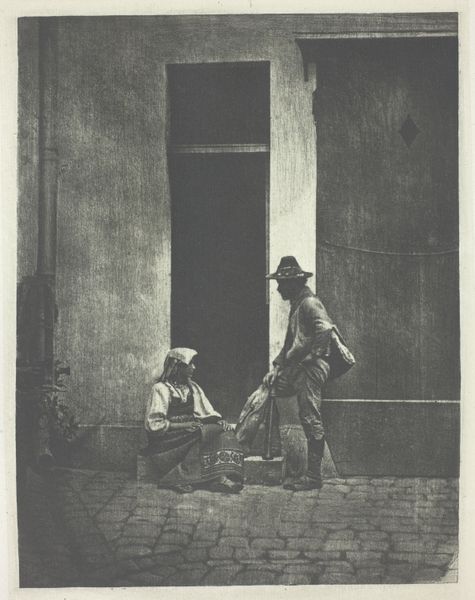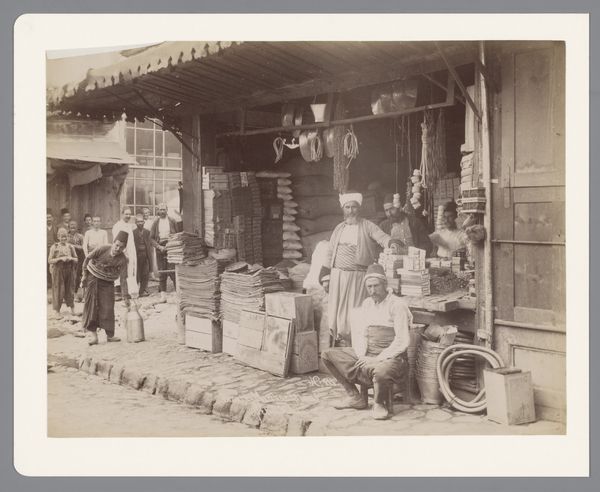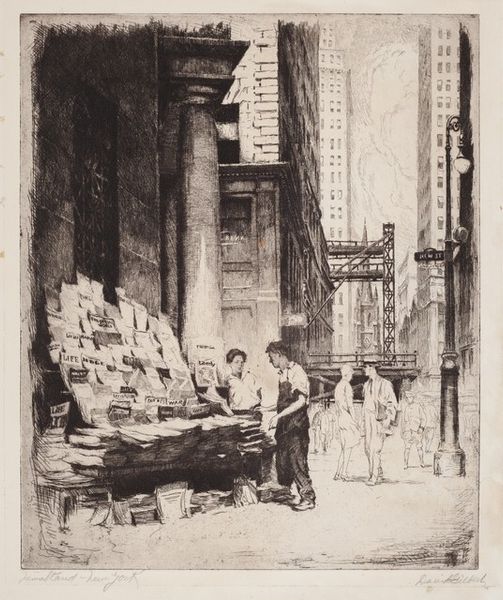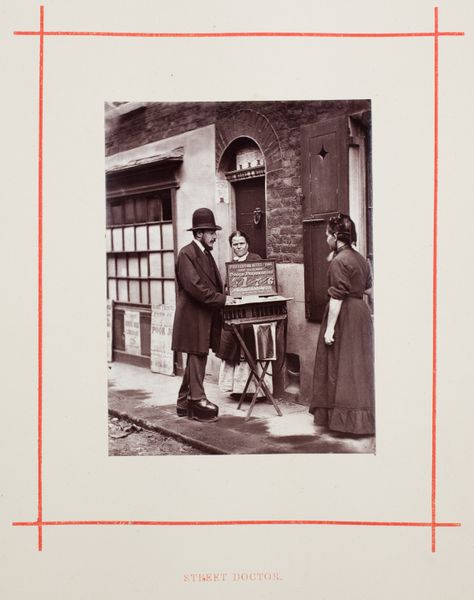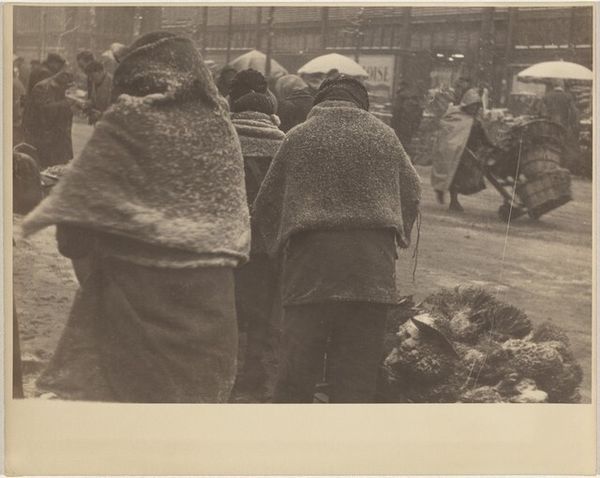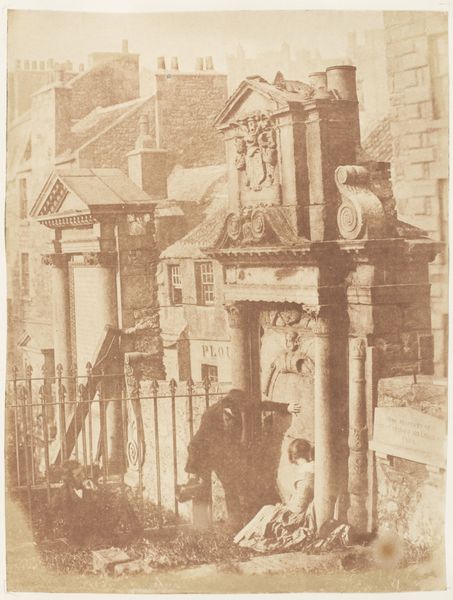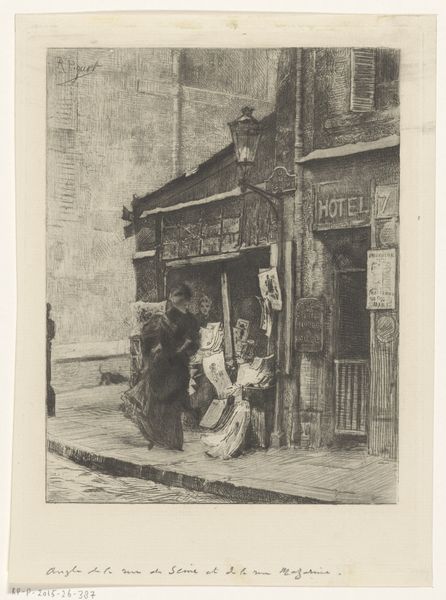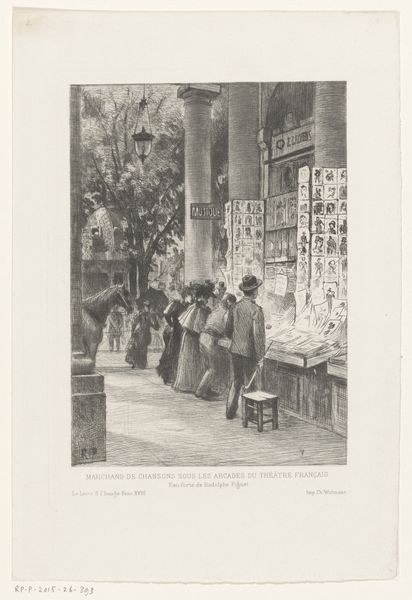
photography
#
picture layout
#
16_19th-century
#
wedding photograph
#
photo restoration
#
wedding photography
#
archive photography
#
photography
#
historical photography
#
couple photography
#
old-timey
#
photo layout
#
celebration photography
Dimensions: 11.4 × 8.6 cm (image/paper); 27.7 × 21.3 cm (page/mount)
Copyright: Public Domain
Curator: John Thomson's 1881 photograph, "Covent Garden Labourers," held here at The Art Institute of Chicago, offers us a fascinating glimpse into Victorian London. What are your immediate impressions? Editor: Stark and strikingly arranged. The figures are meticulously placed in relation to each other, almost like pieces on a chessboard, despite their informal poses. It has a curious stillness. Curator: Indeed. It's part of Thomson’s “Street Life in London” series, which aimed to document the lives of the city’s working class. The workers become symbols here. See the man with the basket on his head; he represents burden, literal and perhaps societal. Editor: And that vertical thrust established by the basket atop the head finds a counterpart in the stacked baskets to the left. Thomson creates this rhythmic alternation, figure-object, figure-object. The composition suggests a kind of hidden geometry. Curator: I agree. Look at how the more well-to-do individual is framed centrally and brightly, observing but separate. There’s a power dynamic on display here that goes beyond just documentation; a hint that society’s roles are as rigid as the building looming in the background. The architectural structure also mimics the structures of social class and the restrictions those classes create for mobility. Editor: The architectural details, the subtle gradations of tone, all lend the image a formal weight beyond its documentary intent. He’s also attending to details like lighting. The highlights give this otherwise gloomy image some vitality and the image achieves balance by way of lighting and its controlled distribution across the surface. Curator: Exactly. Thomson elevates his subjects, not by idealizing them, but by lending them an iconic presence. These aren't just anonymous labourers, they are representatives of an entire social stratum and are captured in the framework of the physical structures surrounding them. This intersection symbolizes class relations. Editor: It makes me think of photographic portraiture of the time. A sort of study in how individuals structure and perceive the structures that dictate them and force them to adopt particular behaviors or attitudes in space. It achieves an eloquent commentary on labor. Curator: Absolutely. Looking at "Covent Garden Labourers," one really begins to contemplate how enduring societal constraints can manifest even in seemingly candid moments. Editor: It offers such a fascinating visual language, prompting us to decode the everyday using aesthetic tools. A remarkable testament to the power of both social documentation and formalism.
Comments
No comments
Be the first to comment and join the conversation on the ultimate creative platform.



